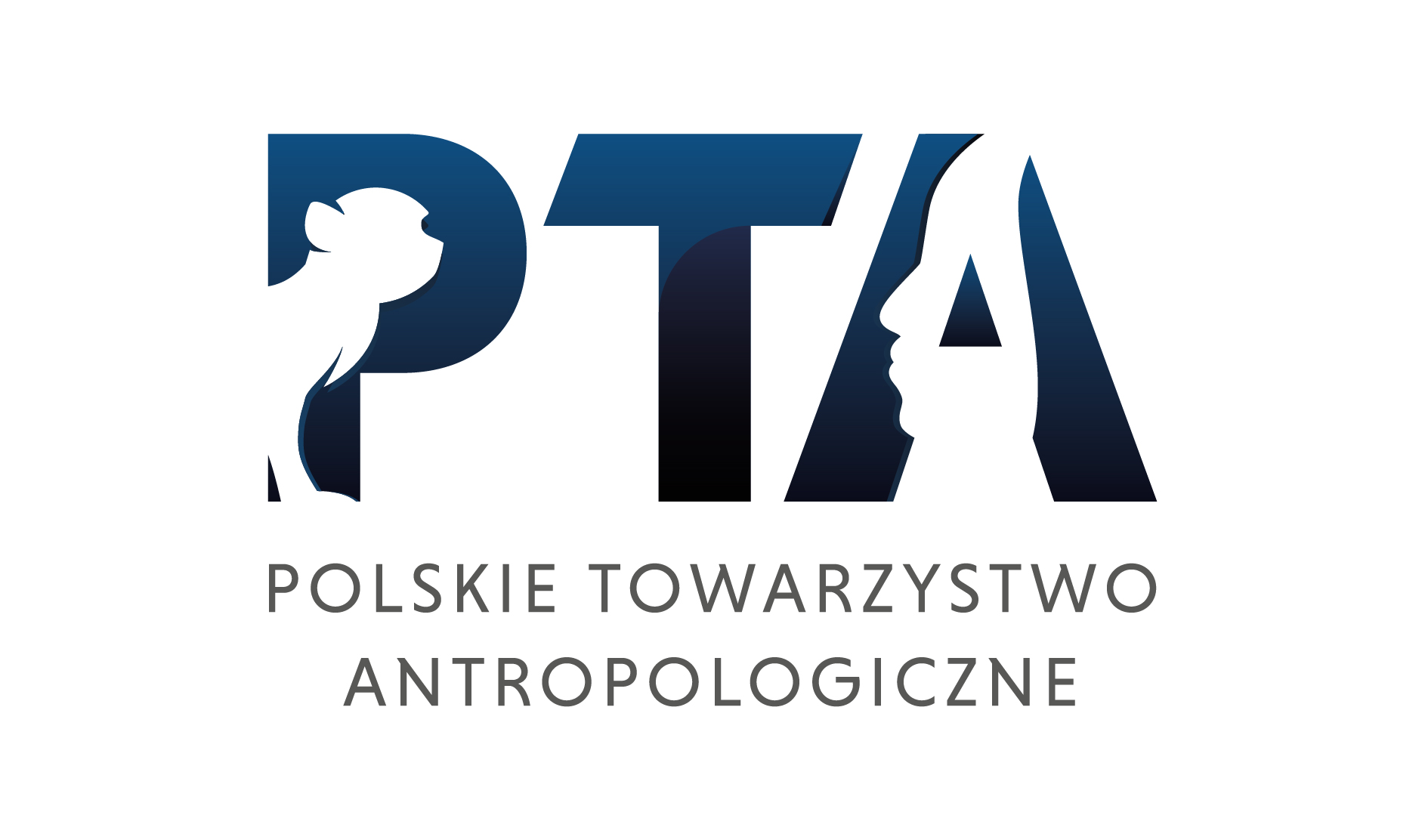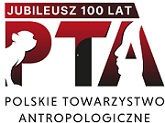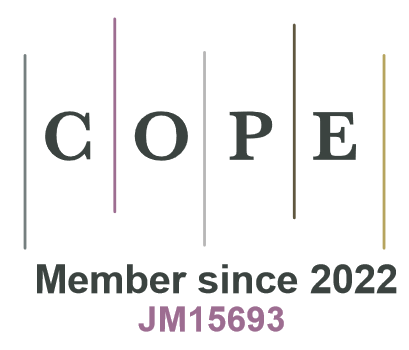Variability of human internal organs size and their connection with the body build type
DOI:
https://doi.org/10.18778/1898-6773.40.2.02Abstract
The main purpose of this work was to investigate some problems connected with human internal organs variability. Particularly two important anthropological problems were taken into account: 1) the interdependences between size of the organs and their changes with age, 2) the interdependences between somatic build and the degree of organs development. This means to find to what degree our knowledge about morphological variability in man gained in the course of somatic investigations, is right when one takes into account the measurements of internal organs as additional characters.
Material was collected in the Medical Examiner's Office of the Academy of Medicine in Poznań — it consists of two samples: 1. data from section protocols on weight of: brain, heart, kindneys and liver, 2. body measurements collected in the medical legal section room. The first sample consists of 780 protoclos dated 1934 - 38 (171 male, 55 female), 1945-49 (139 male, 39 female), 1955 (135 male, 41 female), 1969-72 (150 male, 50 female). From these protocols were taken into account the following data: sex, age, measurements and weight of brain, heart, liver and kidneys, additionally the stature. Criteria on which specimen were taken for further investigations were: 1) no marked decay of tissues, 2) accidental cause of death, 3) no organs demaged. Specimen age ranged from 20 to 80 years.
The second sample was based upon measurements of males died in 1970 and 1971 in Poznań and in Poznań district, All specimens were healthy at the moment of death, which was caused by injury, suicide etc., cadavers were in a state enabling measurements.
Total number of investigated individuals in this sample was 78, their age ranged from 20 to 80 years, On corpses were taken following measurements: 1) length of head neck, 2) frontal trunk length, 3) taight length, 4) distance from heel to knee — joint, 5) arm length, 6) forearm length, 7) pelvic breadth, 8) chest breadth, 9) antero-posterior measure of chest, 10) chest circumference, 11) arm circumference, 12) taight circumference, 13) breadth of the distal epiphysis of femur, 14) breadth of the distal epiphysis of arm bone. Summing up, from these first measurements the stature was obtained.
This paper deals with three problems: 1) ontogenetic changes of organs weight, 2) interdependences between the weight of organs, 3) interdependences between the size of organs and body composition.
Interdependences between the weight of organs and the age have been estimated by means of correlation coefficients r and parameter 7. Analysis of the interdependences between the weight of organs was made using multiple cell association tables (3-dimensional), interdependences between the weight of organs and the somatic build type were analysed by means of Penrose distances and multiple cell association tables.
The most important conclusions from the above analysis enable us to make the following statements:
1) In the same age categories lower mean values of the weight of organs are observed in groups of individuals born in the first decades of 20-the century as compared to those born in successible decades, This may be due to interpopulations differences or to secular trend. The above conclusion may be reached when onę compares tle Lesulls ul present work with the data from literature published earlier. On the other hand, when one is dealing with material investigated in present work only, there exist no statistically significant differences between the weight of organs of individuals — born in various decades.
Therefore in the group of individuals of the most advanced age such difference is significant when one takes into account the average normalised weight of all four organs. This suggests a secular trend in retardation of involutionary changes in organs. This suggestion is also proved by shift of the age at which the maximal weight of organs is reached.
2) Relatively low correlation coefficients between the weights of particular organs have shown some interdependence of the degree of their development. The highest correlation coefficients with other organs were obtainer for heart, Investigations of interdependences between the size of the three organs (brain, heart, and liver) have shown also a lack of second — order interactions.
Hence one cannot take as types (characterized by particular values of measurements) surpluses of frequency in some categories of three organs weights combinations. Stature to a small degree influences strength of the interdependences between organs — elimination of this character from computations results in a slight decrease only in values of correlation coefficient for the weight of organs.
3) Lack of differences in relative and absolute values of brain, heart and liver weights among individuals representing divergent types of somatic build, do not enable use for these types names suggesting various degrees of development of endo, meso- and ektoderma. Types of body build distinguished on the ground of measurements expressing development of the skeleton, muscles and partly fat (taight circumference) refer to various degrees of development of these body components only. Such types could not be taken as constitutional types for which all processes of tissue differentiation and development follow the same patterns.
Downloads
References
Baškirov P. N., Sov. antr. 1958, 2, 9-20.
View in Google Scholar
Boas F. Am. J., Phys. Anthrop., 1940, 26, 63 - 68
View in Google Scholar
DOI: https://doi.org/10.1002/ajpa.1330260122
Bunak V., V., Ué. zap. MGU, nr 34 (Antropologija) Moskva 1940, 59-101,
View in Google Scholar
Bürger M., Biomorfoza i jej znaczenie w procesie starzenia się i stanach chorobowych, Warszawa 1965.
View in Google Scholar
Charzewska J., Przegl. Antrop., 1971, 37, 71-85.
View in Google Scholar
DOI: https://doi.org/10.1108/eb056052
Étecov V. P., [w:] Simpozjum „Antropologia 70 godov”, Moskva 1972, s. 24 - 48.
View in Google Scholar
Dezsö G., Ann. hist. nat. Mus. Nat. Hung, 1966, 58, 489 - 496.
View in Google Scholar
Ćwirko-Godycki J., Przegl. Antrop., 1928, 3, 127 - 134.
View in Google Scholar
Ćwirko-Godycki M., Sniegowski Z. Przegl. Antrop. 1970, 36, 25-40.
View in Google Scholar
Dzierżykray-Rogalski T., Olekiewicz M. Mat. i Prace Antr., 1058, 44, 1-96.
View in Google Scholar
Esipenko B., E., Jaremenko M. S. [w:] Osuvvy gerontolofii, Medicina — Moskva 1969, s. 228 - 234,
View in Google Scholar
Falkiewicz B., Przegl. Anfrop, 1060, 35, 261 - 280,
View in Google Scholar
Frolkis V. V., [w:] Osnovy gerontologii, Medicina — Moskwa 1969, s. 165 - 202.
View in Google Scholar
DOI: https://doi.org/10.1126/science.165.3889.202-b
Geriatria, pod red. K. Wiśniewskiej-Roszkowej Warszawa 1971.
View in Google Scholar
Guilford J. P., Podstawowe metody steturstyczne w psychologii i pedagogice, wyd. II. Warszawa 1964.
View in Google Scholar
Hammond W. H., Hum. biol, 1957, 29, 223-241,
View in Google Scholar
DOI: https://doi.org/10.1093/bja/29.6.241
Heath B., Vopr. Antr. 1968, 29, 20-40.
View in Google Scholar
DOI: https://doi.org/10.1111/j.0033-0124.1968.00040.x
Heath B., Carter L., Vopr. Antr., 1969, 33.
View in Google Scholar
DOI: https://doi.org/10.1353/tho.1969.0088
Janusz A., Mat. i Prace Antrop. 1960, 15, 23 - 31.
View in Google Scholar
DOI: https://doi.org/10.1785/gssrl.31.1-2.23
Jasicki B., Panek S., Sikora P., Stołyhwo E. Zarys antropologii. Warszawa 1962.
View in Google Scholar
Klaus E., Przegląd Antrop. 1971, 37, 283 - 284.
View in Google Scholar
DOI: https://doi.org/10.1016/0375-9601(71)90671-2
Klonowicz S., Zdolność do pracy a wiek człowieka. Warszawa 1973.
View in Google Scholar
Knussmann R., Homo, 1961, 12.
View in Google Scholar
Knussmann R., Moderne statistische Verfahren in der Rassenkunde. [w:] Die neue Rassenkunde, G. Fischer Stuttgart 1962.
View in Google Scholar
Knussmann R., Homo, 1967, 18, 134 - 140.
View in Google Scholar
DOI: https://doi.org/10.5652/kokusaikeizai.1967.140
Kretschmer E., Körperbau und Charakter, wyd. 22, Springer, Berlin 1955.
View in Google Scholar
DOI: https://doi.org/10.1007/978-3-642-49683-7
Kriesel G., Zagadnienie określania budowy somatycznej na podstawie ludzkich szczątków kostnych. UMK — Prace habilitacyjne, Toruń 1970.
View in Google Scholar
Marquer P., Chamla M., Bull, Mem. Soc. Anthr. Paris. 1961, XI ser, 2, 1-78.
View in Google Scholar
DOI: https://doi.org/10.3406/bmsap.1961.1151
Mettler F. A., Am. Mus. Nat. Ilist, New York 1956.
View in Google Scholar
Milicer H., Wych. Fiz. i Sport, 1959, 3, 609 - 620.
View in Google Scholar
Milicer H., Przegl. Antrop., 1969, 35, 149 - 168.
View in Google Scholar
DOI: https://doi.org/10.1111/j.1755-2567.1969.tb00366.x
Newmann R. W., Am. J. Phys. Anthr., 1952, 10, 75-90.
View in Google Scholar
DOI: https://doi.org/10.1002/ajpa.1330100119
Oktaba W, Elementy statystyki matematycznej i metodyka doświadczalnictwa, wyd. 2. Warszawa 1966.
View in Google Scholar
Olivier G., Morphologie et types humaines Vigot Frères. Paris 1961.
View in Google Scholar
Osnovy gerontologii. Medicina, Moskva 1969,
View in Google Scholar
Panek S., Rocz. Nauk. WSWF w Krakowie, 1970, 9, 235 - 262.
View in Google Scholar
Parnell R. W., Am. J. Phys. Anihr., 1954, 12, 209 - 240.
View in Google Scholar
DOI: https://doi.org/10.1002/ajpa.1330120218
Peleščuk A. P., [w]: Osnovy gerontologii, Medicina, Moskva, 1969, s. 218 - 227.
View in Google Scholar
Perkal J., Przegl. Antrop., 1953, 19, 209 - 222.
View in Google Scholar
DOI: https://doi.org/10.1007/BF02861826
Reicher M., Przegl. Antrop., 1969, 35, 19-78
View in Google Scholar
DOI: https://doi.org/10.14219/jada.archive.1969.0004
Rossle R., Roulet F., Mass und Zall in der Pathologie. Berlin-Wien 1932.
View in Google Scholar
Saller K., Konstitutionstherapie in neuer Sicht, F. Enke, Stuttgart 1960,
View in Google Scholar
Sheldon W. H, The varieties of human physique. Harper and Brothers, New York — London 1940.
View in Google Scholar
Skibińska A., Mat. i Prace Antrop., 1972, 83, 3 - 102.
View in Google Scholar
DOI: https://doi.org/10.2307/3957482
Stęślicka W., Mat. i Prace Antrop., 1962, 63, 49-60.
View in Google Scholar
DOI: https://doi.org/10.1007/BF00595392
Strzałko J., Krzyśko M. Przegl. Antrop., 1970, 36, 171 - 180.
View in Google Scholar
Szczotkowa Z., Mat. i Prace Antrop., 1966, 73, 175-258.
View in Google Scholar
Tanner J. M., Rozwój w okresie pokwitania. Warszawa 1963.
View in Google Scholar
Toth T., Trudy moskov. obšč. isp. prirody, 1972, 43 (Čelovek, evolucija i vnutrividovaja differenciacija), 195-201.
View in Google Scholar
Wankce A., Przegl. Antrop., 1954, 20, 64-104.
View in Google Scholar
DOI: https://doi.org/10.2307/276721
Wiśniewska-Roszkowska K., Zagadnienia geriatryczne w klinice chorób wewnętrznych, Warszawa 1964.
View in Google Scholar
Wolański N., Kosmos, A., 1967, 4, 381 - 401.
View in Google Scholar
Wolański N., Kosmos, A., Rozwój biologiczny człowieka. Warszawa 1970.
View in Google Scholar
Downloads
Published
How to Cite
Issue
Section
License

This work is licensed under a Creative Commons Attribution-NonCommercial-NoDerivatives 4.0 International License.








